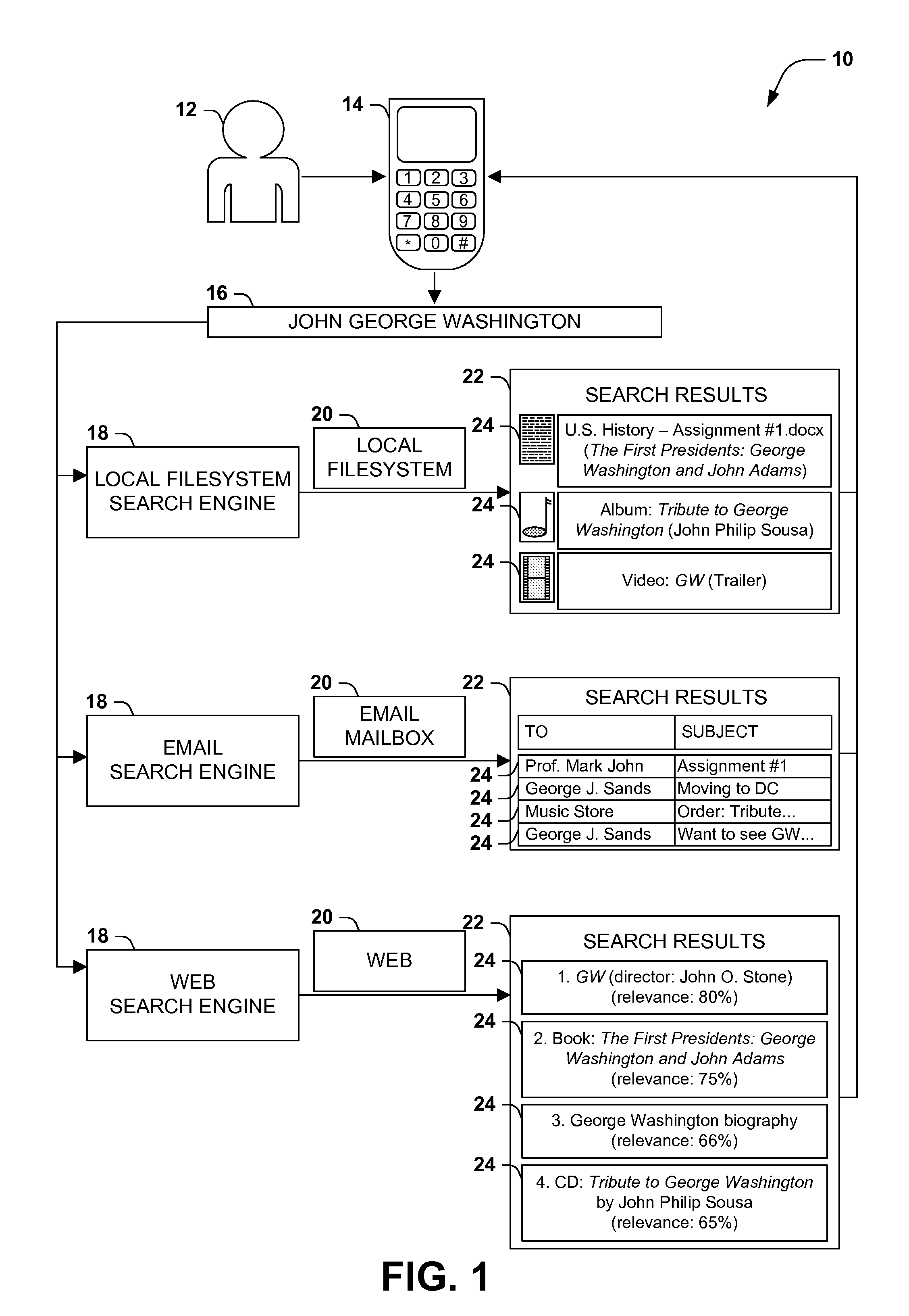Presenting search results according to query domains
a search results and domain technology, applied in the field of presenting, can solve the problems of difficult for users to identify search results related to the topics intended by users, the list of such results may be extensive and verbose, and the presentation of search results has become more complicated. , to achieve the effect of easy review by users
- Summary
- Abstract
- Description
- Claims
- Application Information
AI Technical Summary
Benefits of technology
Problems solved by technology
Method used
Image
Examples
first embodiment
[0028]FIG. 4 presents these techniques, illustrated as an exemplary method 60 of presenting search results 24 in response to a query 16 on behalf of a user 12 of a device 14 having a processor and a display. The exemplary method 60 begins at 62 and involves executing on the processor instructions configured to achieve the presentation of search results 24 according to query domains 42. In particular, the instructions are configured to execute 66 the query 16 on at least one search engine 18 to generate at least one search result 24; to associate 68 each search result 24 with at least one query domain 42; and to present 70 on the display the query domains 42 grouped with associated search results 24. By identifying the query domains 42 included in the search results 24 and by grouping the presentation of the search results 24 accordingly, the exemplary method 60 thereby achieves a topical presentation of the search results 24 to the user 12, and so ends at 72.
second embodiment
[0029]FIG. 5 presents an exemplary scenario 80 featuring these techniques, illustrated as an exemplary system 86 operating within a device 14. The system 86 may be implemented, e.g., as a software architecture comprising instructions executed by a processor 82 of the device 14. This device 14 is operated by a user 12 who inputs a query 16 to be executed on a plurality of search engines 18, and comprises a display 84 where the search results 24 of the query 16 are to be rendered. The exemplary system 86 comprises a query executing component 88, which is configured to execute the query 16 on at least one search engine 18 to generate at least one search result 24. The search result set 22 obtained by the query executing component 88 may then be processed by a query domain associating component 90, which may be configured to associate respective search results 24 with at least one query domain 42, such as within the query domain set 94. For example, the query domain associating componen...
PUM
 Login to View More
Login to View More Abstract
Description
Claims
Application Information
 Login to View More
Login to View More - R&D
- Intellectual Property
- Life Sciences
- Materials
- Tech Scout
- Unparalleled Data Quality
- Higher Quality Content
- 60% Fewer Hallucinations
Browse by: Latest US Patents, China's latest patents, Technical Efficacy Thesaurus, Application Domain, Technology Topic, Popular Technical Reports.
© 2025 PatSnap. All rights reserved.Legal|Privacy policy|Modern Slavery Act Transparency Statement|Sitemap|About US| Contact US: help@patsnap.com



